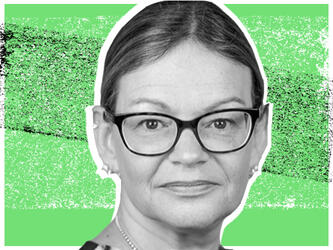Video saved the radio star
I started working at NetValue (now part of Nielsen Online) back in the days when I had hair and a waistline in the last century, providing clients with passively measured internet data from panels recruited by random digit dialling. This was 15 years ago.
Retail clients have been mining golden nuggets from store cards for even longer: Tesco’s Terry Leahy suggested to his marketing team that the Tesco Clubcard could replace the Green Shield stamp programme as long ago as 1993, while Air Miles founder Sir Keith Mills launched the Nectar programme in 2002. So neither of these ‘fads’ is actually new, and the last time I checked, the survey business was fine and dandy, thank you very much.
Passive Aggressive
I’m a huge advocate of passively measured data. Some of the studies that we run in our mobile division have transformed the way in which we’ve been able to understand the modern day shopper. Why ask someone how many apps they’ve downloaded and used (relying on recall) when this is instantly measured through a research app? Why ask someone where they are (or where they’ve been) when the GPS function of their phone can act as a trigger point? But as wonderful as passive measurement is, it won’t answer the most important question on many clients’ minds, and that’s ‘why?’
On a recent study, we used a passive online PC/tablet meter combined with a downloaded mobile application as part of a path to purchase evaluation. Five hundred people were tracked online and via their mobile handsets ahead of their visit to a selection of department stores to see what advertising they had been exposed to, which articles they had read, which retailing apps they used and what they were posting about on various social media platforms, as well as which brands they ‘liked’.
The richness of data that we gathered was far more accurate than recall could have offered. Combined with actual geo-location information it enabled us to see almost a complete picture of everything that led up to the point of purchase. Almost. The full picture only presented itself after we had conducted a follow up survey and reviewed the pre-recruitment surveys that were needed to ascertain people’s shopping and travel habits.
By combining actual behaviour with survey data, we were able to segment people into groups of varying behaviours, from purchasers to browsers, planned visits to impulse buys and gift buyers to self treaters. Without the survey we’d have had a bucket load of ‘what, where, when and how’ but without the all-important ‘why?’
As a community of researchers, we’ve long spoken about the latest new technologies on the block toppling incumbent data gathering methodologies. Phone killed paper, online killed phone, then in a cruel twist of fate, phone’s rebellious younger brother mobile killed both online and phone. And yet the vast majority of research agencies are still using a combination of all of these.
So back to the title of this piece. Passive could actually be the saviour of the survey business, opening up question based market research to business that never would have considered them before but are now using passive methodologies to understand the ‘what’ and need to know the ‘why’. The only thing that deservedly needs to stay in the past is The Buggles.
Ben Hogg is Research Now’s managing director EMEA – portfolio businesses

We hope you enjoyed this article.
Research Live is published by MRS.
The Market Research Society (MRS) exists to promote and protect the research sector, showcasing how research delivers impact for businesses and government.
Members of MRS enjoy many benefits including tailoured policy guidance, discounts on training and conferences, and access to member-only content.
For example, there's an archive of winning case studies from over a decade of MRS Awards.
Find out more about the benefits of joining MRS here.












1 Comment
Annie Pettit
11 years ago
And don't forget that CRM data says nothing about people who don't know your product or don't buy your product. And of course, it doesn't match up purchase behaviours with psychographics. CRM is but one piece of the puzzle, that being the behavioural side for one segment of customers.
Like Reply Report